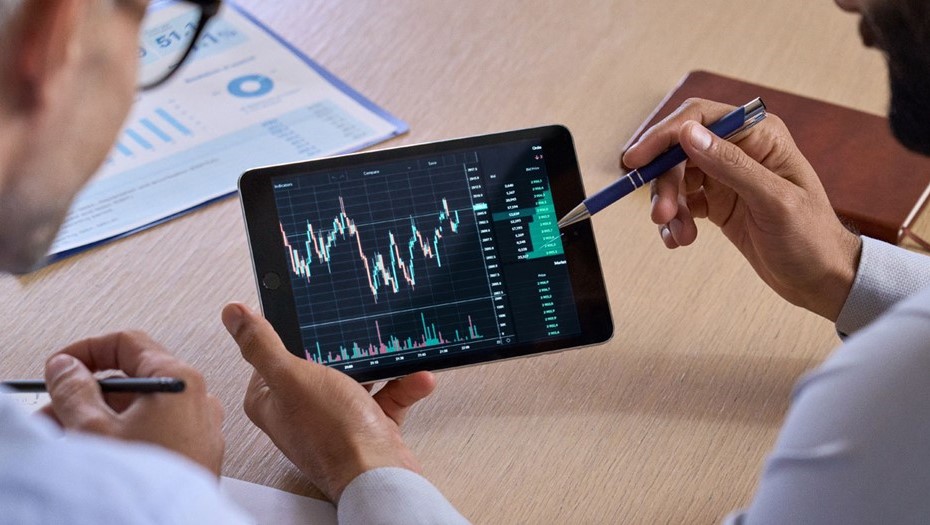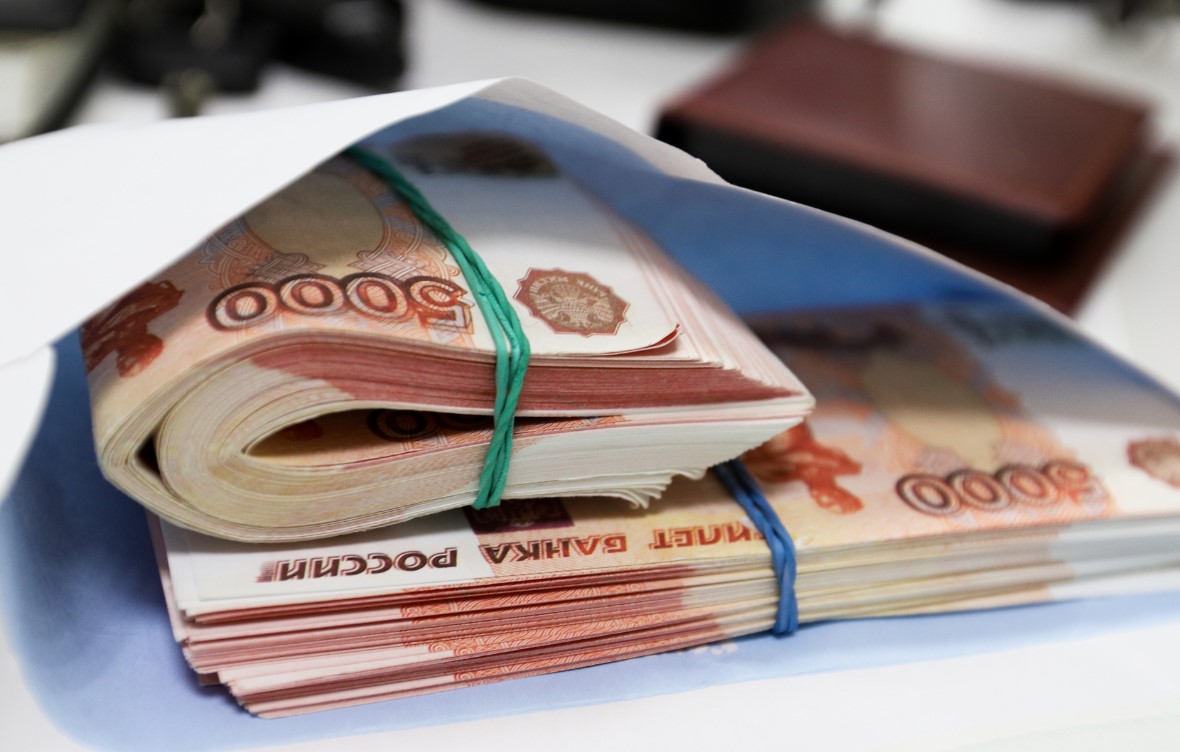Global Economic News: Impact on the Russian Market
Key Takeaway: Global monetary, macroeconomic, and geopolitical events directly shape the dynamics of the rouble, bond yields, and stock prices in the Russian market. Investors must combine real-time monitoring of decisions from the Federal Reserve and the European Central Bank, commodity prices, and new sanction packages with effective hedging and diversification to avoid losses and exploit entry points.
1. Global Monetary Events
1.1 Federal Reserve Decisions and Their Reflection on the Rouble
Recently, the Federal Reserve's decision to maintain the interest rate at 5.25–5.50% strengthened the dollar and increased Treasury yields to 4.8% annually. The Russian rouble briefly weakened to 94–96 USD/RUB, prompting a rise in demand for currency-denominated OFZ bonds and dollar ETFs. Investors, seeking to preserve yield amidst declining carry trade, are shifting into defensive assets and using currency swaps and forwards to lock in rates below 95 roubles. The next Fed decision is expected in December 2025, and its protocol will be critical for determining short positions on the rouble and structuring hedging strategies.
Example: September Correction
Following the Fed press conference, the rouble fell to 96.2, but the Central Bank of Russia purchased $800 million the same day, returning the rate to the range of 93–94. This is a classic example of operational interventions and investor reactions.
1.2 ECB Actions and Their Indirect Influence
The ECB maintained its deposit rate at 4.00%, making Bunds and euro-denominated EMU bonds more attractive. As a result, in September, investors withdrew around 50 billion roubles from OFZs and redirected their portfolios to euro-denominated bonds, increasing the yield on OFZ-10 to 12.3%. Russian fund managers facing outflows are increasing their positions in Turkish and Brazilian currency bonds, where the risk premium compensates for euro-denominated instruments.
Funds' Strategy
Certain funds are employing "long" positions in Bunds and short positions in OFZs to profit from declining EMU risk relative to Russia.
1.3 CBR Interventions
The Bank of Russia has bought around $2 billion in the market since the beginning of the month, keeping the rouble within the range of 92–93 ₽/$. To reduce volatility, the CBR is combining direct interventions with foreign currency swap auctions, allowing banks to attract necessary dollars at acceptable rates. Experts believe that with a new wave of oil outflow from Europe, the CBR will step up foreign currency purchases to prevent the rouble from weakening below 95.
CBR Tools
Among the new measures is the mandatory use of OFZs as collateral for banks' foreign currency loans.
2. Global Macroeconomic Trends
2.1 GDP Growth Forecasts in Major Economies
The IMF estimates global GDP growth at 3.2% for 2025. The leaders—USA (+2.3%), China (+4.8%), Eurozone (+1.7%)—are stimulating demand for Russian exports of energy resources and metals. However, the slowdown in the EU economy is forcing Russian metallurgists to seek new markets in Asia, which reduces logistics costs but decreases margins.
Regional Shifts
Analysts note an increase in steel sales in Southeast Asia from 15% to 22% of the total volume.
2.2 Inflation and Consumer Demand
Global inflation is decreasing (USA — 3.7%, Eurozone — 4.1%), which lowers the global risk premium. Meanwhile, annual inflation in Russia remains at 7.2%, limiting retail consumption growth. Local retailers are responding by developing their own brands and optimising supply chains, preserving margins and stimulating demand through discount programmes.
Example of Retailers
Chain X introduced a discount programme for pensioners, resulting in a 12% increase in store traffic.
2.3 Unemployment and The Labour Market
In developed countries, unemployment is holding steady at 3.5–4.5%. The outflow of skilled labour to IT and fintech is creating demand for outsourcing from Russia. The export of IT services has grown by 18% year-on-year, bringing in more than $25 billion in foreign currency revenue. This supports companies' rouble-denominated earnings and alleviates pressure on the currency market.
Digital Economy
The number of software development vacancies in Russia has increased by 25% compared to last year.
3. Energy Market and Russia
3.1 Global Oil Prices
Brent is fluctuating between $88–93/barrel, with Urals trading at a discount of $3–4. Each dollar change in Brent contributes ±₽150 billion to budget revenues, with fluctuations below $85 leading to increased volatility in the rouble. Investors in the oil and gas sector are using put options on shares of Rosneft and Gazprom as insurance against falling quotes.
Hedging Example
Portfolio X insured 30% of its exports via options contracts, reducing losses by 8% when prices fell to $86.
3.2 Trends in Gas Exports
TTF prices (€55–60/MWh) are softening due to increased LNG shipments to China and India (+15% YoY). This offsets a drop in European demand and keeps Gazprom's revenues within target. Russian traders are entering long-term contracts with production costs for LNG 10% lower than global counterparts, strengthening their positions in the Asian market.
Investments in LNG
Novatek plans to invest $5 billion in expanding LNG capacities in Sakhalin.
3.3 OPEC+ Factors
OPEC+ decisions to cut production maintain prices above $85. Each meeting of the alliance results in a sharp price bounce of 3–5%, creating entry points for speculators. Russian companies are actively hedging 20–30% of their exports with Brent futures to lock in yield under equal conditions.
Volatility Cycles
Since the last OPEC+ meeting, Brent volatility has increased by 12%.
4. Global Stock Indices and the Russian Market
4.1 Correlation Between S&P 500 and Moscow Exchange
The correlation between the S&P 500 and the MMVB index has risen from 0.45 to 0.6, indicating increasing synchrony. The decline in the American tech sector is leading to a massive exit of local investors from IT and e-commerce stocks, worsening short-term corrections on the Moscow Exchange.
Correlation Mechanics
During volatile sessions, Russian funds increase their cash holdings by 15%.
4.2 Influence of DAX and Nikkei
The DAX and Nikkei serve as indicators of demand for raw materials and equipment: the correlation coefficient with Norilsk Nickel and Severstal shares remains around 0.5. During periods of growth for these indices, Russian metallurgists receive a +3% premium to their quotes.
Seasonality
In summer, when demand from Europe declines, Nikkei becomes a more significant driver.
4.3 Market Sectors in Focus
During global stresses, Russian investors shift to defensive sectors: defence, pharmaceuticals, and utilities. Shares of Rostelecom and Sistema rise by 2–4% on days of significant declines in global markets, serving as safe assets.
Recommendation Tracking
Data from X indicate that recommendations for the defence sector have increased by 20% over the year.
5. Currency Fluctuations and Interventions
5.1 Dynamics of USD/RUB and EUR/RUB
USD/RUB fluctuates in the range of 91–95, depending on Fed expectations and news about gas supplies. EUR/RUB reacts to ECB rates and price spreads between euro-denominated EMU bonds and OFZs.
Curve Example
The forward points curve for the rouble indicates a 4% annual premium on EUR/RUB.
5.2 CBR Currency Interventions
The CBR employs point and bilateral auctions, having spent over $10 billion this year to support the rouble. This has reduced peak volatility from ±5% to ±2% upon publishing key data.
Intervention Windows
Typically, interventions occur on the first and third Tuesdays of the month following the Fed/ECB meetings.
5.3 Hedging Instruments
Forwards, swaps, and options allow investors to lock in USD/RUB and EUR/RUB rates. Structured products with cap protection and multi-currency ETFs traded on the Moscow Exchange are popular.
Practice
Portfolio Y employs 30% of its funds in forwards on EUR/RUB, which reduced losses during a 3% weakening of the rouble.
6. Geopolitics, Sanctions and Trade Flows
6.1 New Sanctions and Their Consequences
The August US package prohibited the primary market for Russian sovereign bonds and restricted SWIFT access for several banks. Russia activated settlements in yuan and roubles, reducing dollar strain on the payment balance and cutting capital outflow by 15% in the last quarter.
Financial Mechanisms
Settlements via SPFS and CIPS have increased fivefold.
6.2 Counter-Sanctions and Alternatives to the EU
Russia's countermeasures restricted food imports from the EU, allowing CIS agricultural exporters to increase shipments by 20%, reducing prices for milk and cheese in Russia by 5%.
Local Initiatives
Cooperation development with Belarus has resulted in a 12% increase in cheese production.
6.3 New Trade Routes
The development of the "North-South" corridor through Iran and multimodal chains through Kazakhstan-China has reduced logistics costs by 10% and increased transit volumes to India by 30%. New terminals on the Volga and Akhtuba reduce delivery times for heavy cargo by 20%.
Projects
The launch of the terminal in Astrakhan is planned for the end of 2025, which will reduce international transport times to 12 days.
7. Investment Strategies and Hedging
7.1 Portfolio Diversification
The recommendations are as follows:
- OFZs and currency-denominated OFZs (40%);
- Gold and precious metals (10–15%);
- IT and ESG stocks (10–20%);
- Currency instruments (10%);
- Short sales and options for protection (5–10%).
Step-by-Step Actions
For beginners: start with OFZs, then add gold, and gradually transition to complex instruments.
7.2 Tactical Strategies on Volatility
Arbitrage between Treasuries and OFZs and well-thought-out options strategies during strong Brent movements yield 1.5–2% monthly. It is crucial to control risk via strict stop orders.
Instruments
Utilise mini-futures and binary options for short timeframes.
7.3 Long-term Approaches
For a horizon of 3–5 years, suitable strategies include:
- Investments in renewable energy and infrastructure;
- Shares in domestic software and data centres;
- Tier 2 bank bonds with yields above 12%.
Planning
Prepare a 5-year plan with biannual reviews.
8. Analytical Sources and Forecasts
8.1 IMF and Bloomberg Reports
The IMF’s World Economic Outlook and Bloomberg’s Economic Dashboard provide forecasts for growth, inflation, and risks. The "Country Risk" sections for Emerging Markets and "Global Macro" are critical for assessing Russia's position.
Practice
Subscribe to daily digests and prepare summary notes for the portfolio management committee.
8.2 OECD and JP Morgan Reviews
The OECD’s Economic Outlook and JP Morgan’s EM Strategy Reports offer medium-term scenarios that are important for defining investment tactics and understanding reforms.
Advice
Compare forecasts from different agencies to identify consensus points.
8.3 Local Forecasts and Ratings
Ratings from Expert RA and AKRA, as well as reviews from VTB Capital and Sber Investor, help assess the credit risk of issuers and industry prospects.
Recommendations
Include local ratings in the scoring system for issuers.
Conclusion: Global news—from the Fed's decisions to sanction packages—have formed a new paradigm for the Russian market. Real-time monitoring and thoughtful hedging enable investors to maintain yield and reduce risks while achieving long-term growth.




